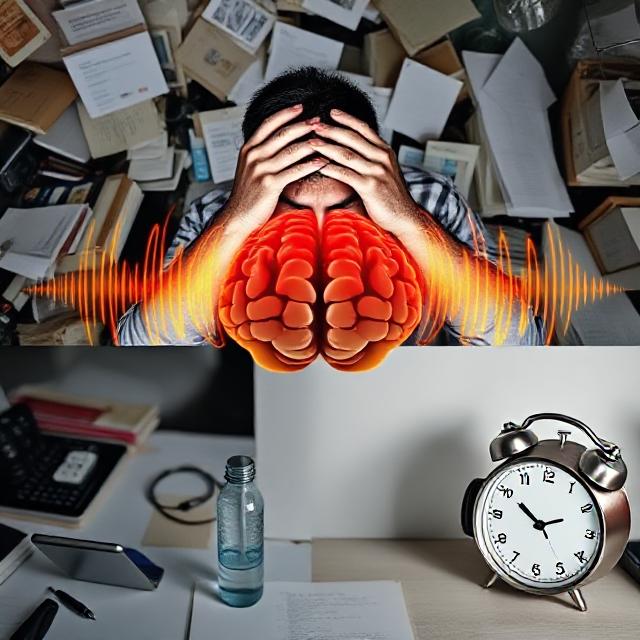
Table of Contents
Deep Focus vs Light Focus: When to Use Each
TL;DR
There are two main types of focus your brain uses: deep focus and light focus. Deep focus is immersive and intense—perfect for solving problems or creating. Light focus is flexible and open—ideal for brainstorming, planning, and learning. Knowing when and how to use each can unlock your cognitive potential and boost productivity.
I. The Two Modes of Attention
The human brain isn’t always meant to operate in one mode. It dynamically shifts between:
🧠 Deep Focus (Monotask Mode)
- Fully absorbed
- Tunnel vision
- High-effort cognition
- Prefrontal cortex domination
- Strong dopamine + norepinephrine coupling
- Alpha-theta drop-in, followed by gamma bursts
Think: writing a thesis, coding, chess, reading a dense book.
🌊 Light Focus (Diffuse Mode)
- Soft, open attention
- Mental spaciousness
- Passive problem-solving
- DMN (Default Mode Network) subtly active
- Light alpha and beta waves
- Ideal for pattern recognition and creativity
Think: walking while pondering, organizing your week, casual reading, listening to music while journaling.
II. What Happens in the Brain
| Focus Mode | Dominant Brain Areas | Brainwaves | Neurochemistry |
|---|---|---|---|
| Deep Focus | Dorsolateral prefrontal cortex | Alpha → theta → gamma | Dopamine, norepinephrine, acetylcholine |
| Light Focus | Default mode & association areas | Light alpha, low beta | Serotonin, anandamide, mild dopamine |
Deep focus is about selective suppression. You block distractions and activate working memory.
Light focus allows the brain to integrate loosely connected ideas and rest without full disengagement.
III. When to Use Deep Focus
Use deep focus when your task is:
- High-stakes or requires precision
- Unfamiliar or complex
- Creative output (writing, building, designing)
- Anything where mistakes are costly
- Requires uninterrupted blocks (45–90 min)
🔒 Best times for deep focus:
- First 2–4 hours after waking (cortisol peak)
- After a walk or cold shower
- With background silence or ambient sounds only
💡 Tip: Use a ritualized deep work protocol—same time, same place, same setup.
IV. When to Use Light Focus
Use light focus when your task is:
- Brainstorming or creative idea gathering
- Casual reading or light review
- Transitioning between tasks
- Planning or organizing
- Passive memory consolidation
☀️ Best times for light focus:
- Midday or post-lunch when energy dips
- During physical movement (walks, chores)
- While listening to soft music or in nature
🌀 Light focus supports insight by allowing subconscious problem-solving.
V. Common Mistakes: Misusing Focus Modes
❌ Trying to do deep focus during low-energy hours
Solution: Schedule light tasks for midday.
❌ Using light focus during crunch-time
Solution: Eliminate distractions and set a 90-minute timer.
❌ Switching too often between modes
Solution: Batch deep work and light work in chronological layers (ex: morning = deep, afternoon = light).
VI. How to Train Each Focus Type
🎯 Deep Focus Training
- Pomodoro technique (25 on, 5 off)
- 90-minute flow sprints
- Use visual anchors (single tab, one-page notebook, full-screen mode)
- Practice distraction resistance: phone off, no social tabs
- Nootropics: L-theanine + caffeine, Rhodiola, Alpha GPC
🧘 Light Focus Training
- Walking meditation or journaling
- Gentle movement + music
- Loosely guided brainstorming
- Creative visualization
- Nootropics: Lion’s Mane, Bacopa, low-dose CBD
VII. Optimizing Your Day by Focus Mode
Morning (8am–12pm):
🧠 Deep focus—build, write, solve, create
🔧 Tools: Timer, coffee, silence
Midday (12pm–3pm):
🌊 Light focus—walk, plan, sort, reflect
🍵 Tools: Tea, light music, notepad
Afternoon (3pm–6pm):
🧠 Light-to-medium—review, meetings, edits
🧭 Tools: Checklists, collaborative apps
Evening (6pm+):
🌙 Passive focus—reading, ideas, subconscious percolation
🛏 Tools: Journal, nature, no screens
VIII. Flow State Transitions: From Light to Deep
To get into deep focus from light focus, try this:
- ✍️ Reflect or plan casually (light focus)
- 🧘♂️ 3–5 minutes of breathwork
- 🎧 Start your “flow anchor” music or white noise
- 🔒 Block all notifications
- ⏲️ Set a 90-minute focus timer
This lets you slide into alpha-theta, the flow entry zone.
IX. Final Thoughts: Use the Right Gear
Your mind is like a high-performance vehicle.
- Deep focus is fifth gear—fast, high torque, precision.
- Light focus is cruising—efficient, relaxed, panoramic.
Knowing when to use each doesn’t just make you more productive.
It makes you mentally agile.
Train both. Master the switch. Flow with intention.

